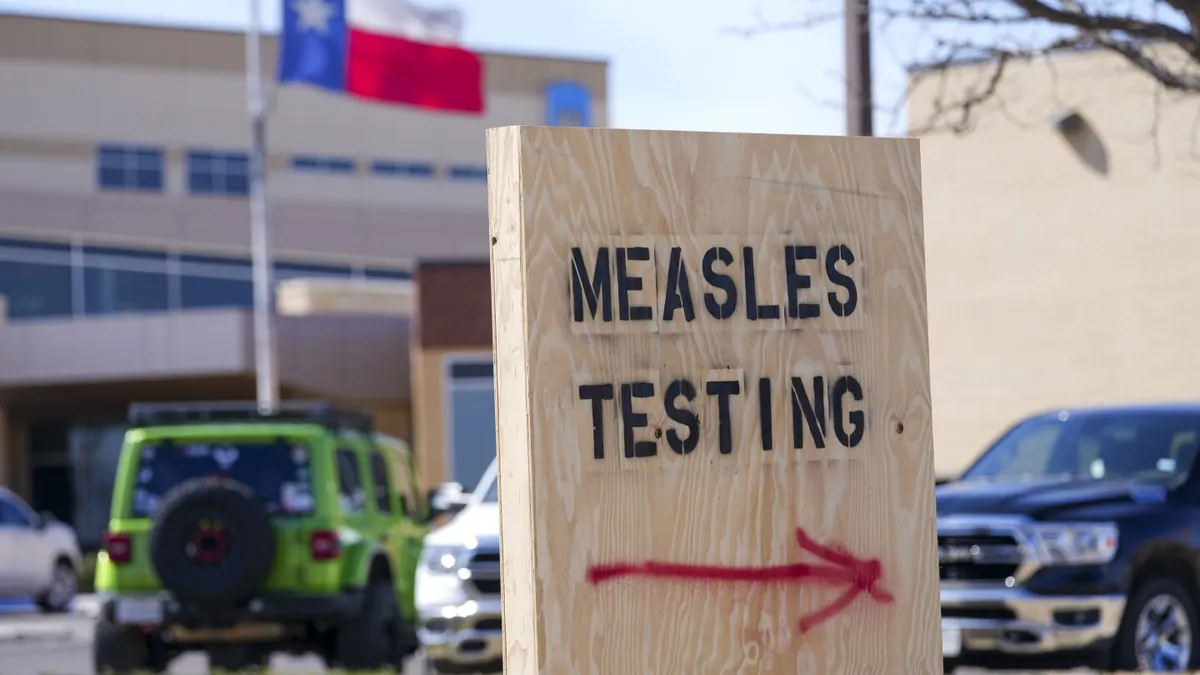
The United States has reached a staggering milestone, surpassing 1,000 measles cases as of Friday. This alarming statistic comes despite Texas reporting one of its lowest counts of newly confirmed cases in the wake of a significant outbreak that began three months ago. Texas remains the epicenter of the outbreak, accounting for the majority of cases in the country, with 709 confirmed cases as of the latest update. This outbreak has also spread to neighboring states, including New Mexico, Oklahoma, and Kansas.
Among the casualties are two unvaccinated elementary school-aged children who succumbed to measles-related illnesses in West Texas, the epicenter of the outbreak. Additionally, an unvaccinated adult in New Mexico has also died from a measles-related illness. The Centers for Disease Control and Prevention (CDC) identifies other states with active measles outbreaks, which are defined as having three or more related cases. These states include Indiana, Michigan, Montana, Ohio, Pennsylvania, and Tennessee.
North America is currently facing two other significant outbreaks, all linked to the same strain of the measles virus. In Ontario, Canada, there have been a remarkable 1,440 cases reported from mid-October to May 6, marking an increase of 197 cases in just one week. Similarly, the Mexican state of Chihuahua has reported 1,041 measles cases, accompanied by one death, highlighting the serious nature of the situation across the continent.
Measles is caused by a highly contagious virus that spreads easily through the air when an infected individual breathes, sneezes, or coughs. The virus is preventable through vaccination and was declared eliminated in the U.S. as of 2000. However, as vaccination rates fall in certain communities, health experts express concern that the spread of the virus could continue for an entire year.
In Texas, a total of 709 cases have been confirmed across 29 counties, predominantly in West Texas. State health officials reported only seven new cases since the last update on Tuesday, with a total of 92 hospitalizations throughout the outbreak. Approximately 1% of these cases, or fewer than ten, are currently considered actively infectious. Notably, 57% of Texas' cases are concentrated in Gaines County, which has a population of 22,892 and is home to a close-knit, undervaccinated Mennonite community.
New Mexico has reported a total of 71 cases, with four new cases confirmed on Friday. Most of these cases are located in Lea County, with additional cases in Eddy, Doña Ana, and Chaves counties, and the first case logged in Curry County this week. Tragically, an unvaccinated adult died from a measles-related illness in early March.
Oklahoma maintains a stable total of 14 confirmed cases, while Kansas has reported 48 cases across eight counties, primarily in the southwestern region. Meanwhile, Indiana has documented eight cases in Allen County, and Michigan has confirmed nine cases, with a notable outbreak linked to the Ontario situation.
Montana has seen a resurgence, adding three new measles cases in the last two weeks, totaling eight cases since the outbreak began in mid-April. North Dakota has confirmed nine cases, marking its first outbreak since 2011. Ohio has reported 34 cases, with one hospitalization, while Pennsylvania has recorded 15 cases, including some related to international travel.
Tennessee has documented six cases, with links between at least three of them, although further details remain unclear. Additionally, measles cases have emerged in various states, including Alaska, Arkansas, California, and more, often traced back to individuals who contracted the virus abroad.
To prevent measles, the most effective method is to receive the measles, mumps, and rubella (MMR) vaccine. The CDC recommends that children receive their first MMR shot between the ages of 12 and 15 months, followed by a second dose between 4 and 6 years. Adults concerned about waning immunity may also receive another MMR shot, as it poses no harm.
Individuals with documentation of having received a live measles vaccine in the 1960s do not require revaccination, while those immunized before 1968 with an ineffective vaccine should get at least one dose of the current MMR vaccine. Those born before 1957 generally possess presumptive immunity due to widespread infection during their childhood.
Measles initially infects the respiratory tract before spreading throughout the body. Symptoms include a high fever, runny nose, cough, red watery eyes, and a characteristic rash. The rash typically appears three to five days after the onset of initial symptoms, starting on the face and spreading downwards. The fever may spike above 104 degrees Fahrenheit when the rash appears. While most children recover from measles, the disease can lead to severe complications, including pneumonia, blindness, brain swelling, and even death.
Currently, there is no specific treatment for measles. Healthcare providers focus on alleviating symptoms, preventing complications, and ensuring patient comfort during the recovery process. As the U.S. grapples with this resurgence of measles cases, the importance of vaccination and public awareness cannot be overstated.